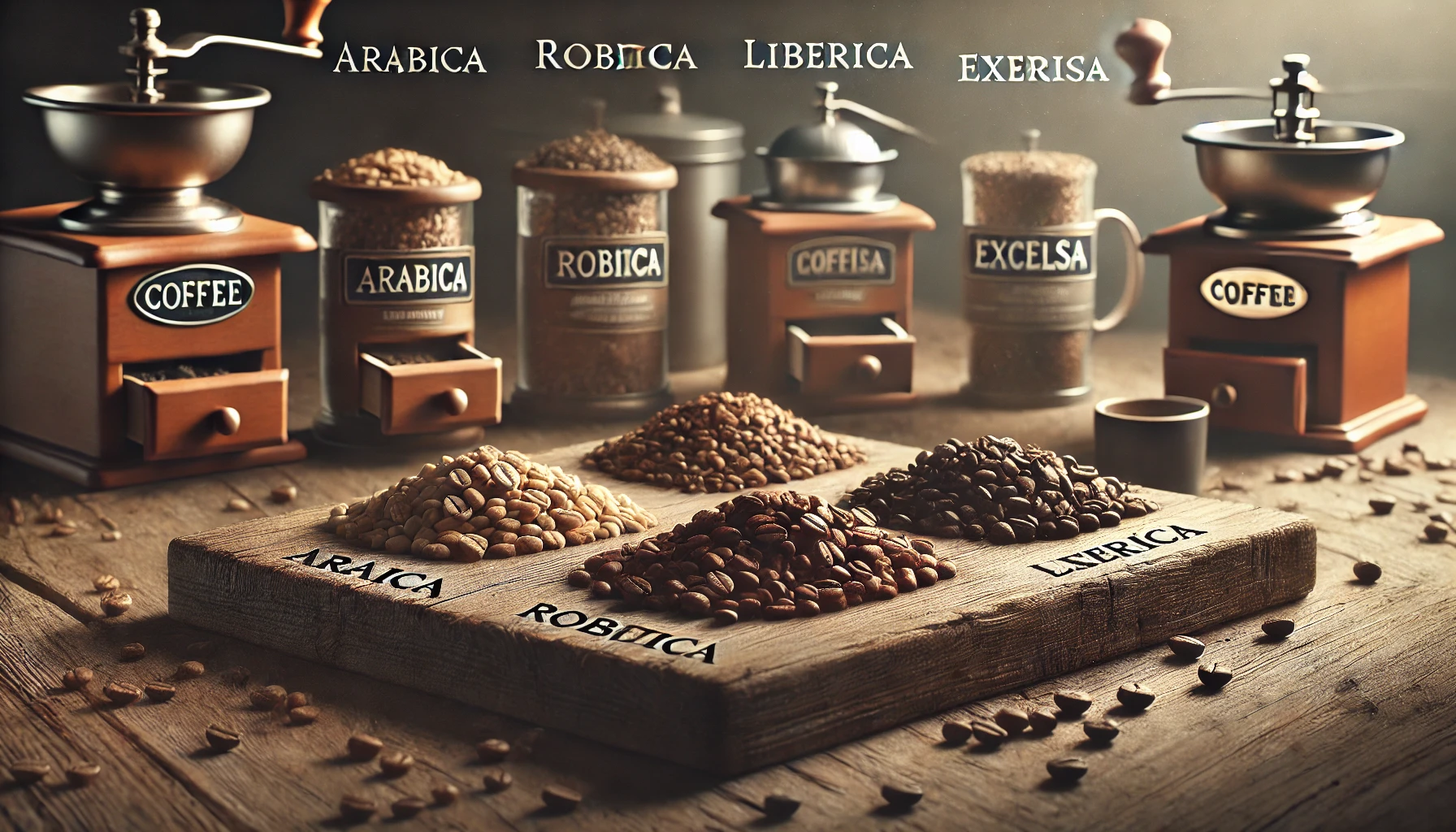When you sip your morning coffee, you probably don’t think much about the type of coffee bean in your cup. But the kind of bean used plays a major role in the flavor, aroma, and overall experience. Understanding the main types of coffee beans helps you become a more informed coffee drinker and makes choosing your next brew a lot more exciting.
The Four Main Types of Coffee Beans
There are four primary types of coffee beans grown commercially around the world. Each has unique characteristics in terms of flavor, caffeine content, and where it’s cultivated.
1. Arabica (Coffea arabica)
Arabica is by far the most popular coffee bean in the world, accounting for over 60% of global coffee production.
- Flavor: Smooth, often with fruity, sweet, and slightly acidic notes.
- Caffeine: Lower than other varieties.
- Growing conditions: High-altitude regions with rich soil, such as Ethiopia, Colombia, and Brazil.
- Why people love it: Arabica beans offer a refined and complex flavor, ideal for black coffee drinkers and specialty brews.
2. Robusta (Coffea canephora)
Robusta beans are more hardy and easier to cultivate, especially in lower altitudes and warmer climates.
- Flavor: Strong, earthy, often described as bold or bitter.
- Caffeine: Almost double that of Arabica beans.
- Growing regions: Africa, Southeast Asia (especially Vietnam), and parts of India.
- Common uses: Instant coffee, espresso blends (for crema), and lower-cost commercial blends.
3. Liberica (Coffea liberica)
Liberica is less common globally but holds a special place in some local markets.
- Flavor: Woody, smoky, with floral or fruity notes.
- Caffeine: Moderate, between Arabica and Robusta.
- Growing regions: Philippines, Malaysia, and parts of West Africa.
- Notable trait: Beans are larger and have an unusual shape.
4. Excelsa (Coffea excelsa)
Excelsa was once classified as its own species, but it’s now considered a variety of Liberica.
- Flavor: Tart, fruity, and mysterious, often used in blends for complexity.
- Caffeine: Moderate.
- Cultivation: Southeast Asia.
- Role in blends: Often used to add depth and intrigue to medium and dark roasts.
Arabica vs. Robusta: The Classic Showdown
These two types dominate the coffee industry, and understanding their differences can help you choose the right coffee for your taste.
| Feature | Arabica | Robusta |
|---|---|---|
| Flavor | Smooth, sweet, acidic | Strong, bitter, earthy |
| Caffeine Content | Lower | Higher |
| Cost | More expensive | Cheaper |
| Popularity | Specialty and premium | Instant and mass-market |
| Crema in Espresso | Less crema | More crema |
Specialty Coffee: Mostly Arabica
When you walk into a third-wave coffee shop, chances are the beans they serve are 100% Arabica. That’s because Arabica is seen as the premium choice, thanks to its wide range of flavors and smoother profile. These beans are often grown at high altitudes, hand-picked, and roasted with precision.
However, some high-quality Robusta is gaining attention, especially in regions like India and Uganda, where certain varieties have unique and desirable flavors.
Which Bean Should You Choose?
It depends on your taste preference and how you brew your coffee.
- If you love smooth, complex coffee: Go for Arabica.
- If you want something bold and high in caffeine: Try Robusta.
- For an adventurous palate: Seek out Liberica or Excelsa — they’re rare, but worth trying if you find them.
Understanding Coffee Labels
Next time you’re browsing coffee bags at the store or online, check the label:
- 100% Arabica: Smooth and refined.
- Arabica/Robusta Blend: Often used in espresso blends.
- Single-Origin: Coffee from one region, allowing unique flavor notes to shine.
- Blend: A mix of beans from different areas, often balanced for consistent flavor.
Final Thoughts: Why Knowing Your Beans Matters
Just like wine, coffee has a rich world of flavor waiting to be explored. The more you understand about the types of beans, the better you’ll become at choosing a coffee that suits your taste and brewing style.
Whether you’re team Arabica, a Robusta rebel, or curious about rare varieties, knowing the bean is the first step toward a truly satisfying cup.

